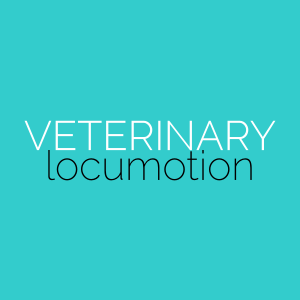
A Day in My Life as a Locum Relief Vet
If you have considered a transition to relief or locum medicine, you’re not alone. An increasing number of veterinarians are looking to locum relief work as a way to maximize flexibility and quality of life, while also earning a lucrative income. Relief medicine appeals to a wide variety of vets, from parents wanting more time with their children to young vets seeking time for travel and adventure, and more.
Before making a transition to relief or locum medicine, you should understand what working as a relief vet actually entails. How will your days flow, and what will be expected of you? So, to help you out here is a day in the life of a locum relief vet…
My alarm clock goes off at 6:00 a.m., and I roll out of bed. Today, I’ll be working at an upscale, single-doctor practice in a nearby big city. I’ve worked there several times before, and I always enjoy it. Their clients are friendly and compliant, the staff is well-trained and fun to work with, I always get a lunch break and get to leave on time, and the practice is surrounded by great lunch restaurants. They pay a bit less than some of my other clients, but the trade-off is well worth it.
The owner of this practice usually wears scrubs, so I pull on my favorite scrubs and sneakers. I toss a snack and bottle of water in my backpack while checking to make sure that my stethoscope, extra scrubs, and favorite reference books are still in there. I don’t have to worry about packing a lunch, which simplifies my morning routine significantly.
I fight through a bit of traffic and arrive at 7:45 a.m., fifteen minutes before the practice opens. The doors are still locked, so I knock until the receptionist lets me in. We visit for a few minutes, catching up on our lives since I last worked there a few months ago, and the receptionist introduces me to a new team member. I always stop to visit at the front desk before the day gets started because I’ve learned that winning them over is the key to gaining client respect and getting more work at a practice.
When I walk back into the treatment area, I that some of my favorite veterinary technicians and assistants are working. We also take a few minutes to catch up, sharing updates on veterinary medicine and life in general. I set down my backpack, then look up my username and password to log into the practice’s computer system.
The schedule shows that I have appointments every 30 minutes from 8 – 10:30 a.m., surgeries from 10:30 a.m. – 12:30 p.m., lunch from 12:30 – 1:30 p.m., and appointments from 1:30 – 5:30 p.m. I don’t always agree to do surgery for relief clients, but I’ve spent enough time at this practice to be comfortable with their medical quality and their anesthesia/pain management protocols. Today, I’ll be neutering two puppies.
At 8 a.m., the first appointment arrives – a new kitten visit. I talk to my vet tech before we enter the room, confirming which vaccines we’re going to recommend, how we will handle client education, and how we will work together to collect samples and give vaccines. I try to be flexible and adapt to the practice’s normal routine, wherever I’m working, but communication is key to making that happen. Discussing a plan helps ensure that this room, and the rest of our day, go smoothly. After we finish the kitten’s exam and services, I type up the patient’s medical notes while the vet tech enters charges in the computer.
Morning appointments flow in this way until 10:30 a.m., gradually becoming easier as the techs and I fall back into a comfortable rhythm working together. After finishing morning appointments, we shift to surgery. I examine my patients, review the anesthesia protocols that the surgery tech has created, and proceed with anesthesia and surgery. Everything goes well and both patients are fully recovered by noon, leaving me with an hour and a half for lunch.
I write my cell phone number on the treatment area whiteboard, in case the team needs to reach me while I’m at lunch. I then walk to a nearby restaurant and sit outside to eat lunch, enjoy some fresh air, and catch up on calls and emails.
Two of my existing clients have sent emails requesting relief coverage later in the month. Both are regular clients and I’m available on the requested dates, so I confirm both requests and adds the dates to my calendar.
I also have a voicemail from a potential new client, requesting relief help. I’ve never worked for his practice before, and I have some reservations. They have a reputation for being a high-volume practice, and I’m also not familiar with their medical quality. I call and speak with the practice owner, asking about medical protocols, support staff, and everything in between. I can’t find any major red flags and he offers me a higher daily rate than I normally charge, so I decided to give the practice a try. I schedule myself to work one day at the practice, on a day that the owner will be working. If it’s not a great fit, it’s only a one-day commitment and I will be well-compensated. If everything works out, the practice may turn out to be a lucrative client.
Finally, I head back to the hospital for afternoon appointments. I see a handful of wellness visits, a dog with stress colitis, and a cat in need of a health certificate. I discharge the morning’s surgical patients and even have a few minutes to flip through a veterinary journal (thanks to a canceled appointment).
By 5:30 p.m., my records are complete and the vet techs have handled everything else. I leave a note for the practice owner, updating her on how the day went and asking her to follow up on the dog with stress colitis. Then, I say goodbye to the support staff and walk out the front door.
When I get home, I sit down at the computer for a few minutes to handle a few business tasks. It’s tempting to save these for tomorrow, but I resist. I prefer taking care of my business responsibilities on the evenings that I work; although that makes my workdays feel a bit longer, it also allows me to work just two or three days a week and not think even think about work on my days off. I email my relief contract to the new client, inserting the work hours and daily rate that we agreed to in our call. I create an invoice for today’s work and submit it via email. Finally, I document the number of miles that I drove today and file my receipt from lunch for my accountant.
I eat dinner, unwind with some television, and crawl in bed. As expected, the day went smoothly and I actually had fun working with the team. Even after taking care of some work tonight, I still had more free time than I did as an associate vet because I wasn’t stuck at work all night returning client calls and authorizing prescription requests. I was able to practice medicine, and then leave for the day.
I drift off to sleep, eagerly looking forward to the hiking trip that I have planned for tomorrow, with no work responsibilities left hanging over my head.
Summary
Working as a relief vet is not all that different, on a day-to-day basis, from working as an associate veterinarian. On your first day at a new hospital, you will spend some time getting to know the support staff, getting a feel for their protocols and workflows, navigating the practice management software, and learning what medications are available. By the end of the day, you will likely feel comfortable with the team and be relatively familiar with how the practice operates. If you like the practice, and they like you, you may find yourself returning to the practice on a recurrent basis, allowing you to develop an even greater comfort level.
Relief vets create their own schedule, and they are free to decline any work offer that does not appeal to them. This provides an opportunity for unparalleled work-life balance, while also allowing you to identify and avoid unpleasant work environments. In exchange for this flexibility, however, relief vets need to be prepared to take on some non-medical tasks, such as marketing themselves to new clients, interviewing with potential new clients, scheduling workdays, and preparing invoices. Fortunately, these tasks are not time-consuming. In most cases, they can fit into a lunch break or a brief period of time after work, leaving relief vets free to enjoy their days off with friends and family.
What is a Locum or Relief Veterinarian?
Relief or locum vets don’t work for one particular practice. Instead, they offer their services to many practices, filling in when a practice needs an additional veterinarian. Many relief vets take single-day assignments in their immediate area, working a day here and there to fill gaps in hospital schedules. Other relief vets seek out longer-term assignments involving travel, covering for a veterinarian’s maternity leave, or filling in while a practice searches for a new associate.
In 2018, the American Veterinary Medical Association estimated that there were 2,300 relief veterinarians in the United States, an increase of 30% since 2008. An increase in relief vets has filled a crucial need for practices, while also creating a unique career opportunity for veterinarians. Unlike an associate vet, relief vets never have to submit a vacation request and hope it will be approved; they can take unlimited vacation by simply not scheduling work on days they want to travel. By creating their own schedule, relief vets can have the ultimate work-life balance.
How do relief vets afford to take advantage of this flexibility? In most cases, a relief vet earns more per day than a full-time staff veterinarian. Even after subtracting business-related and personal expenses associated with relief medicine, many relief vets can earn a full-time salary working just two to three days a week.
Veterinary Locumotion is brought to you by the Team that also drives Veterinary Jobs Marketplace, the leading global veterinary jobs marketplace…
Every Veterinarian, Veterinary Nurse or Veterinary Technician can now enjoy our elegantly simple, extremely flexible and highly professional platform. Publish your Profile and post your Availabilities – from just a single day to multiple days and weeks, and up to 400 days in advance – and be instantly Matched with Locum Relief jobs and work opportunities locally, interstate or internationally.
Veterinary Employers can now enjoy our elegantly simple, extremely flexible and highly professional platform. Publish your Business Profile and post your open shift Needs – from just a single day to multiple days and weeks, and up to 400 days in advance – and be instantly Matched with Locum Relief team members locally, interstate or internationally.
And both of you will really enjoy receiving Alerts when there is a Match.
Just like Netflix, Spotify or Disney+, Veterinary Locumotion works on a simple, transparent, low-cost subscription and stamp model.
Completely transparent. No agency fees. No hourly rate markups. No complex arrangements or middlemen. No payment delays. Employers and Veterinarians, Veterinary Nurses or Veterinary Technicians deal directly with each other. No-one in between, not even us!
Discover more about our Veterinary Locum Relief Marketplace and get all of the answers to your FAQ’s here.
